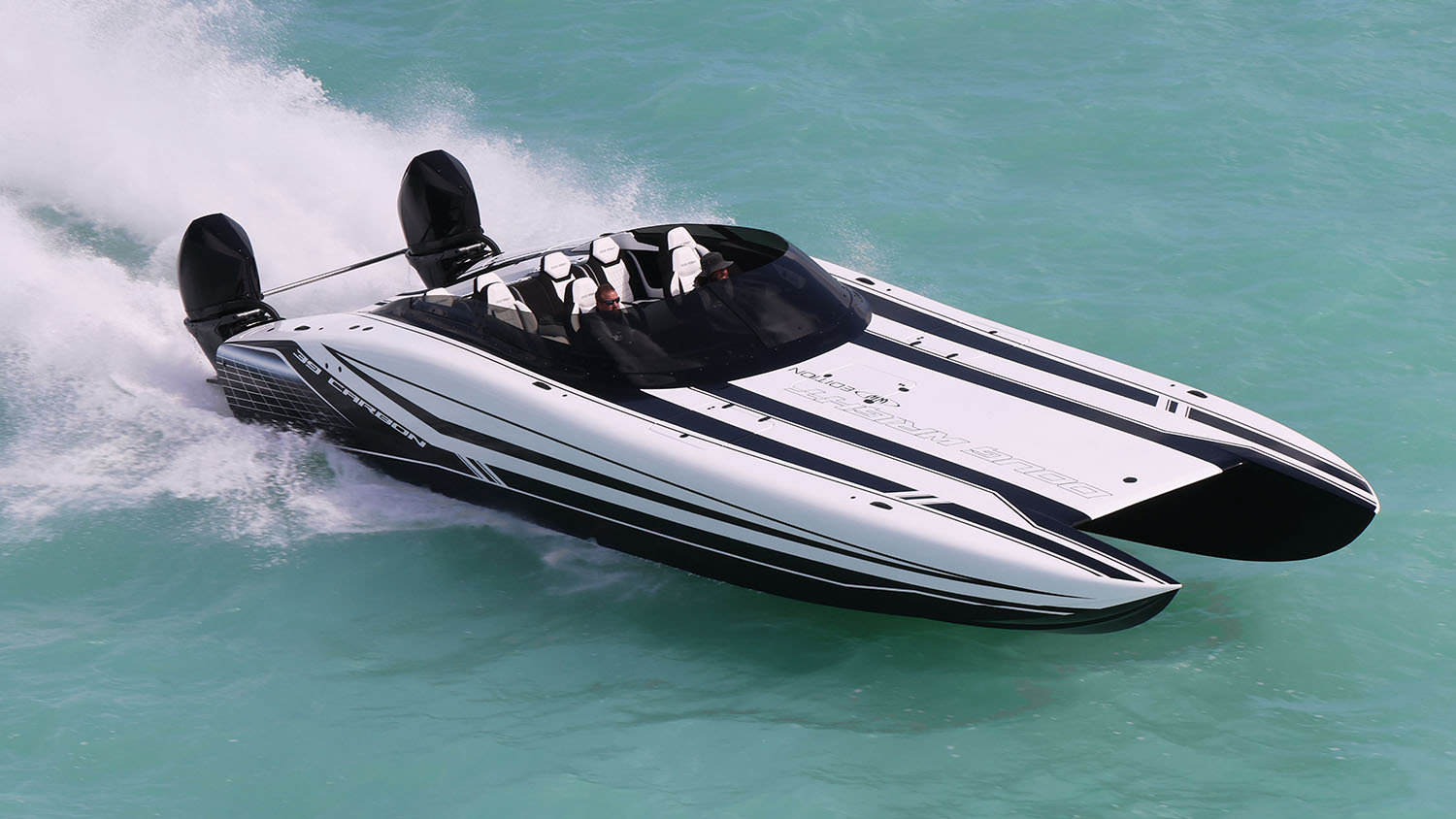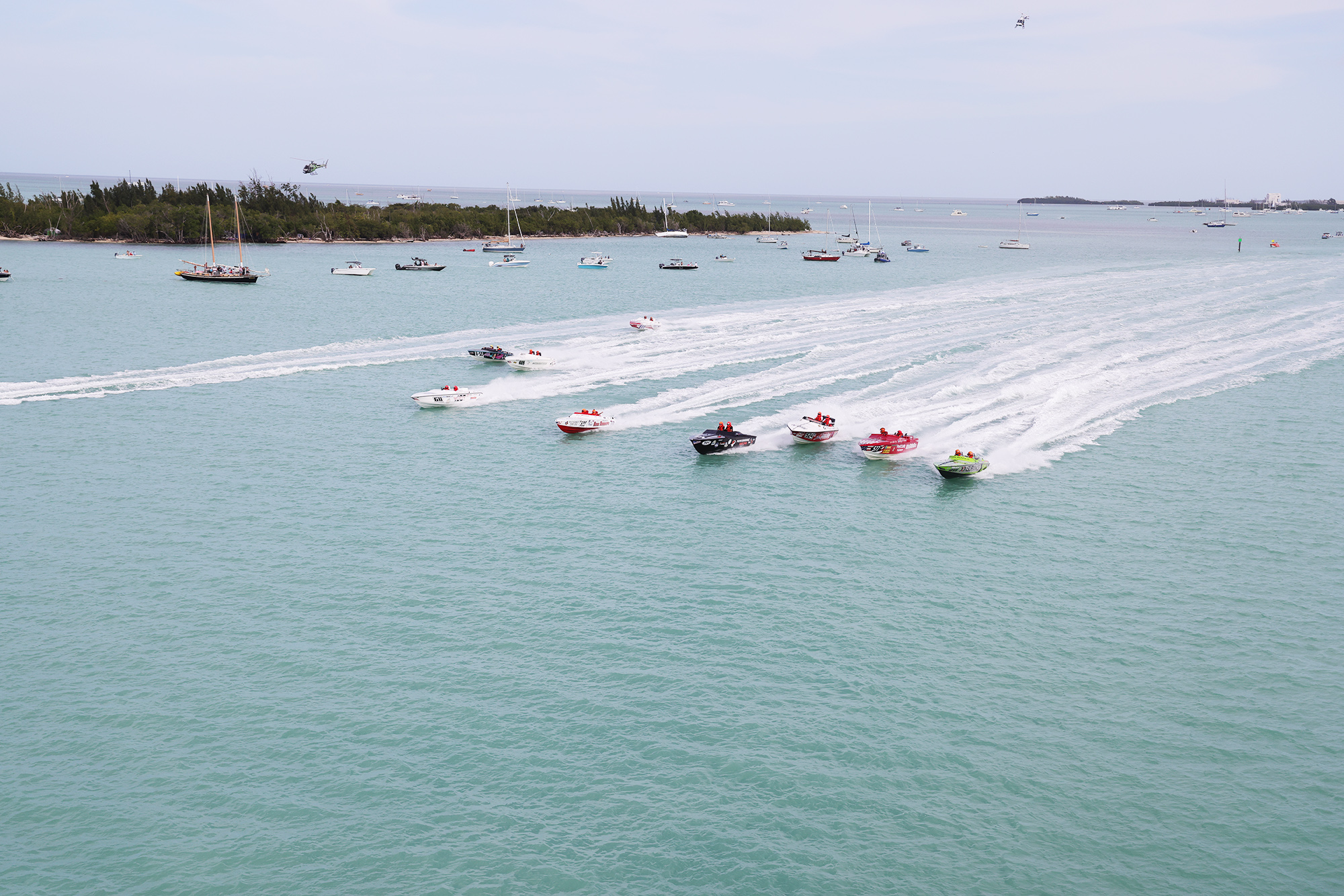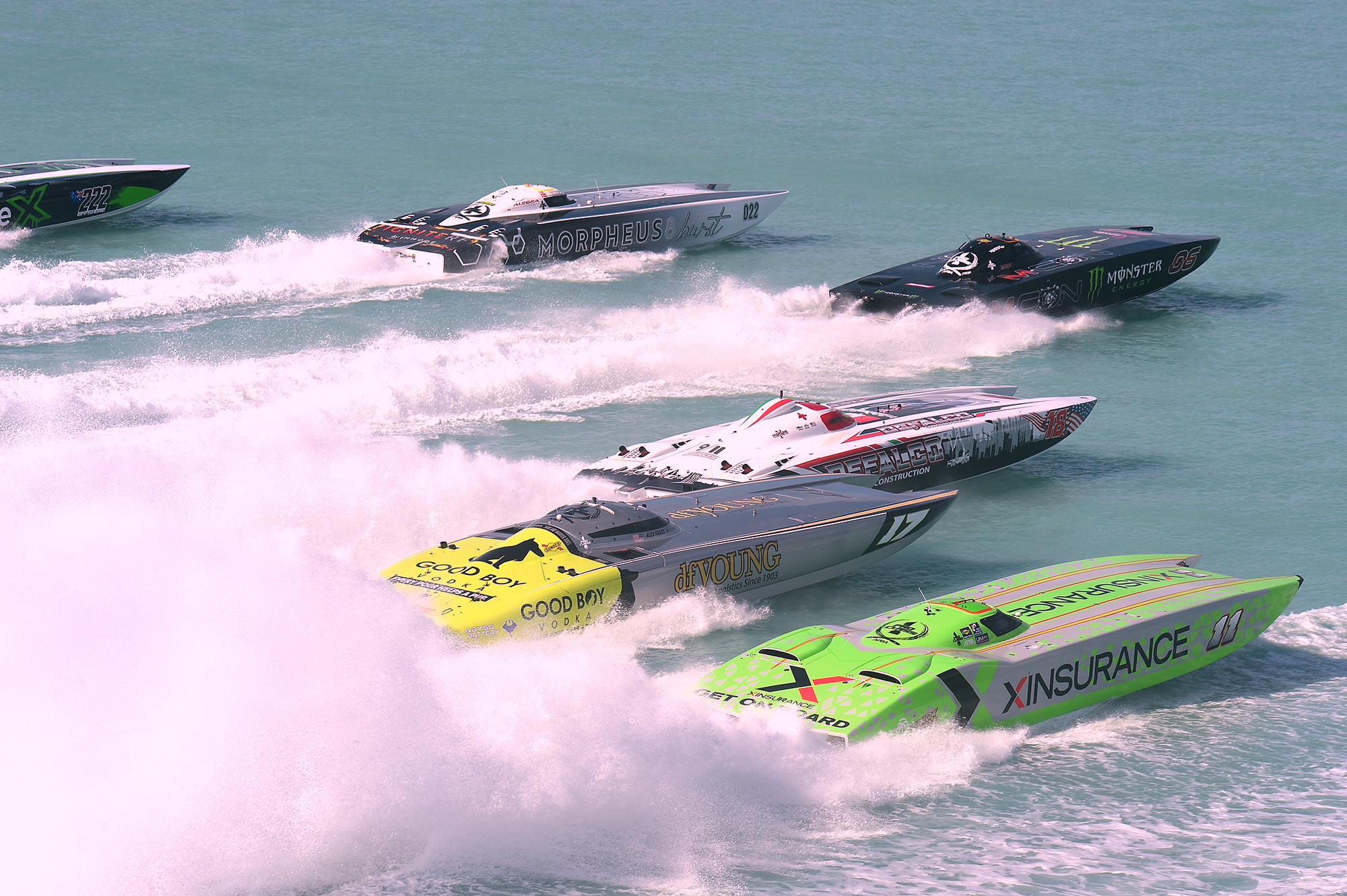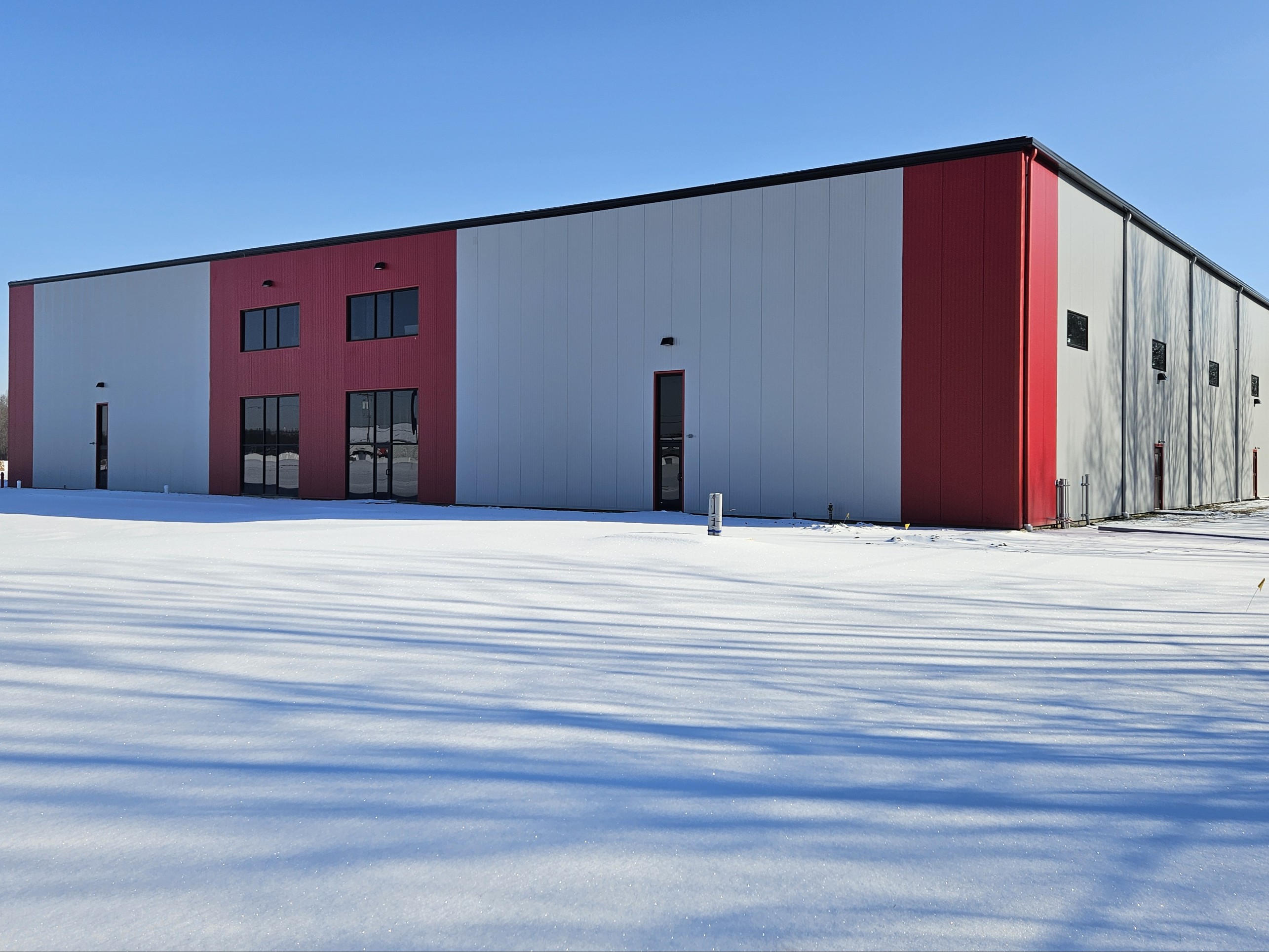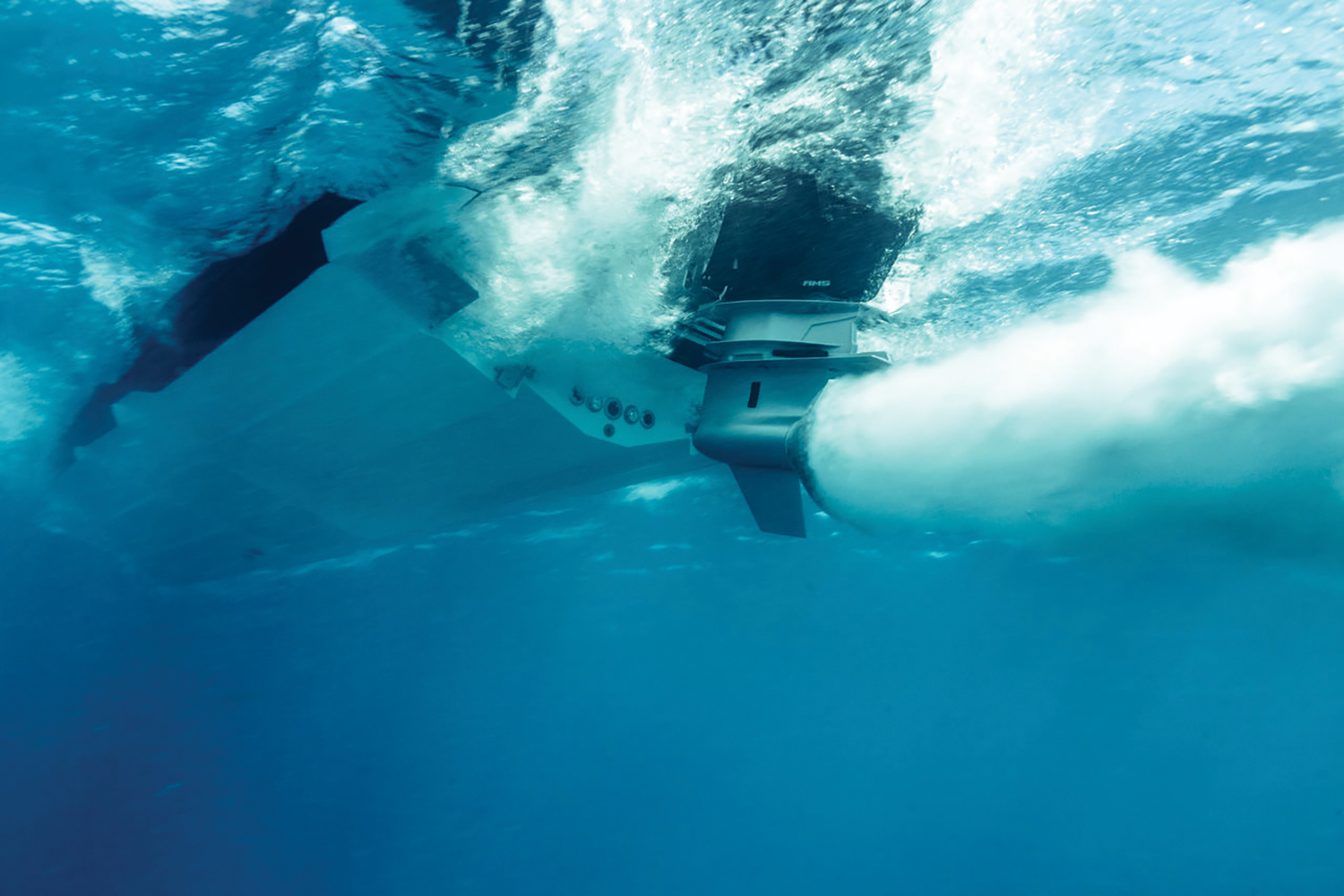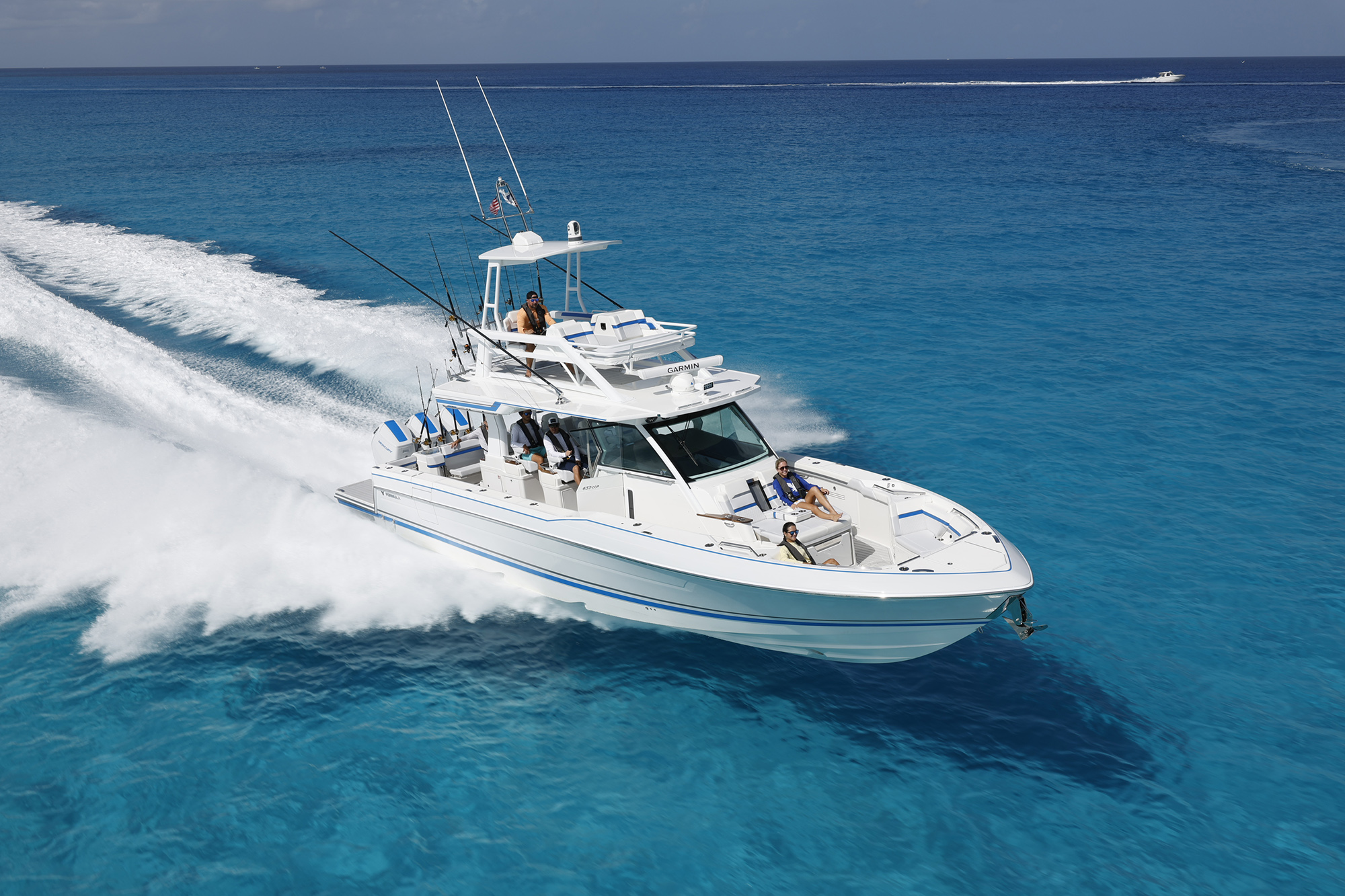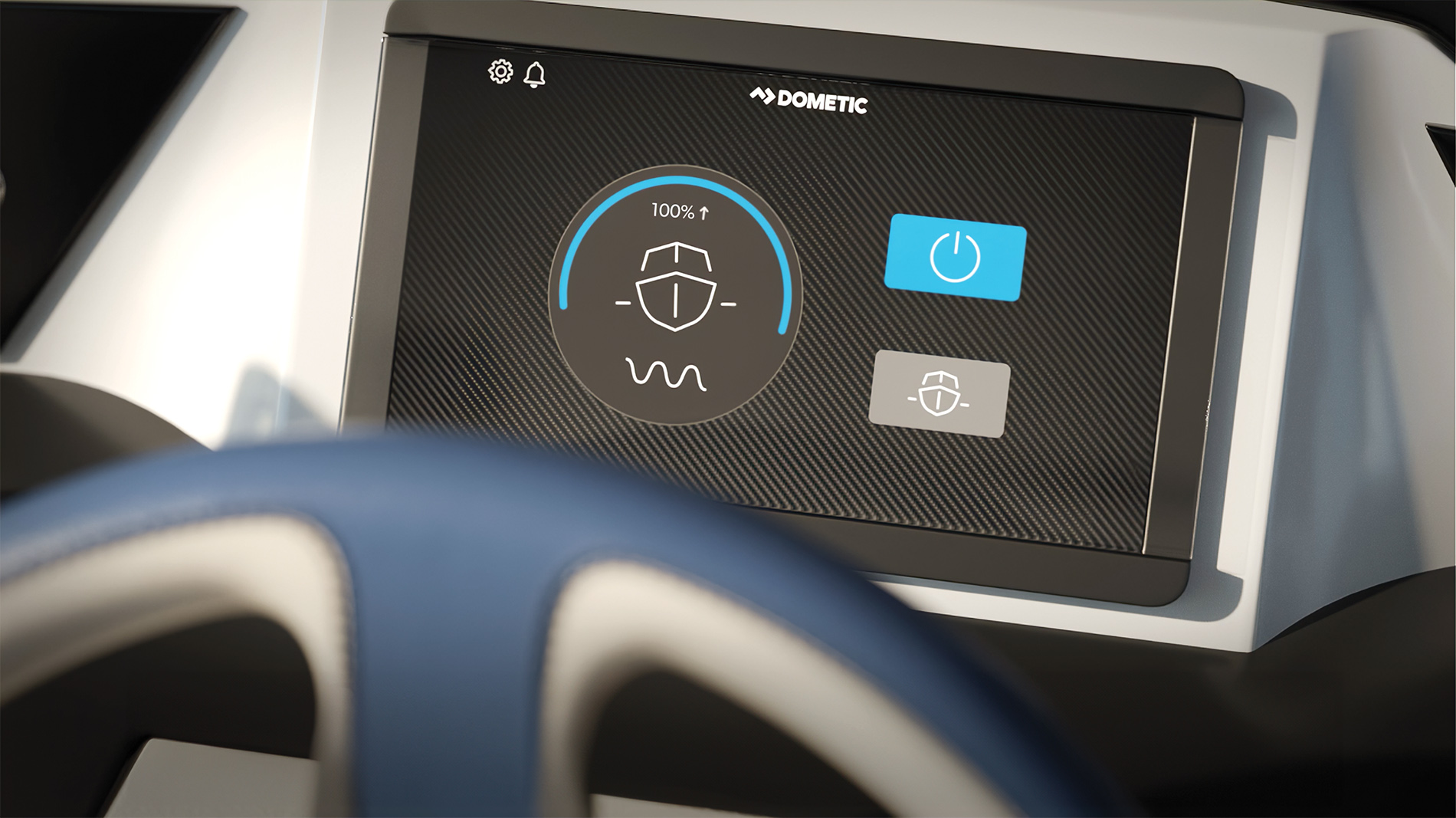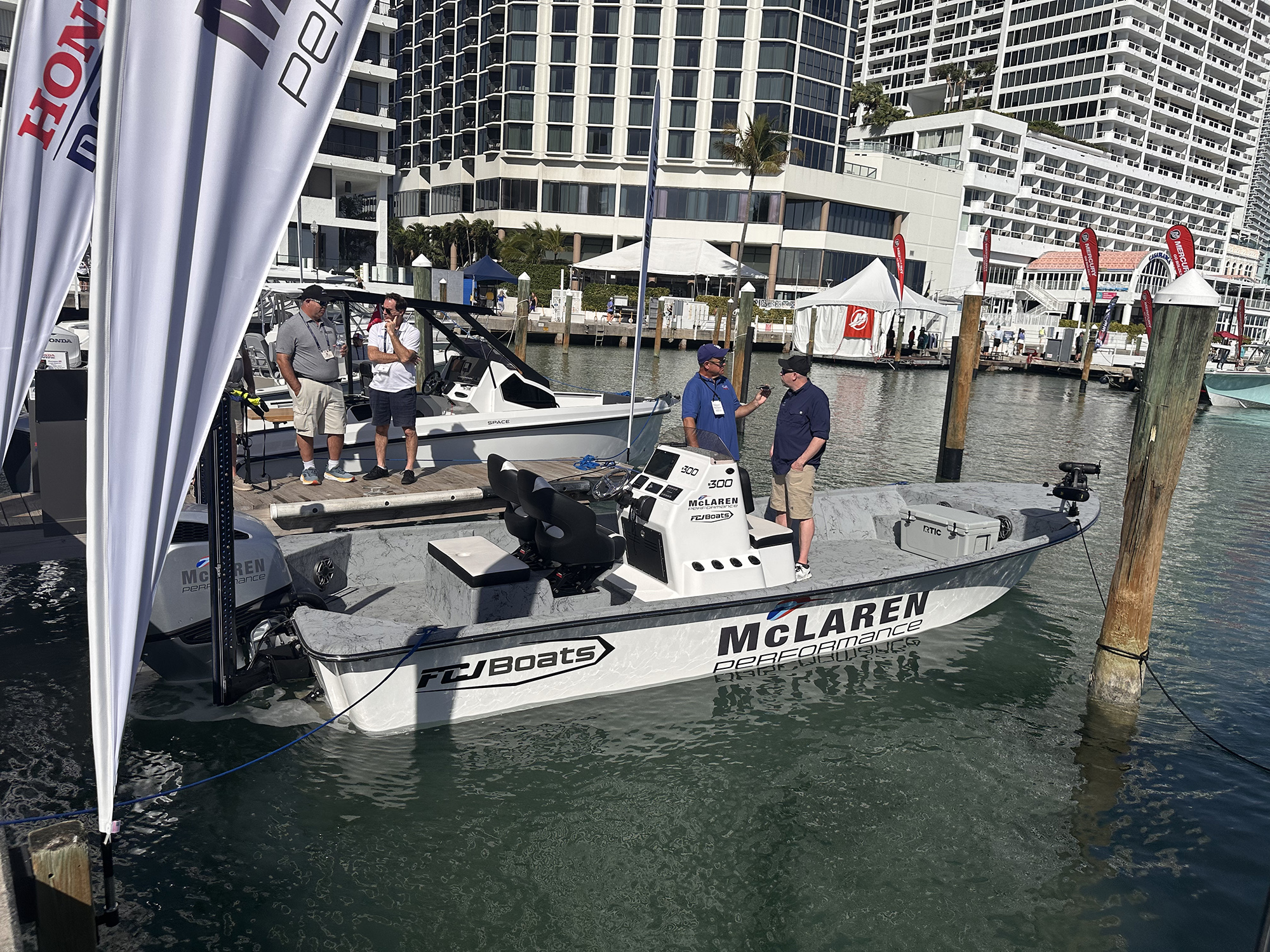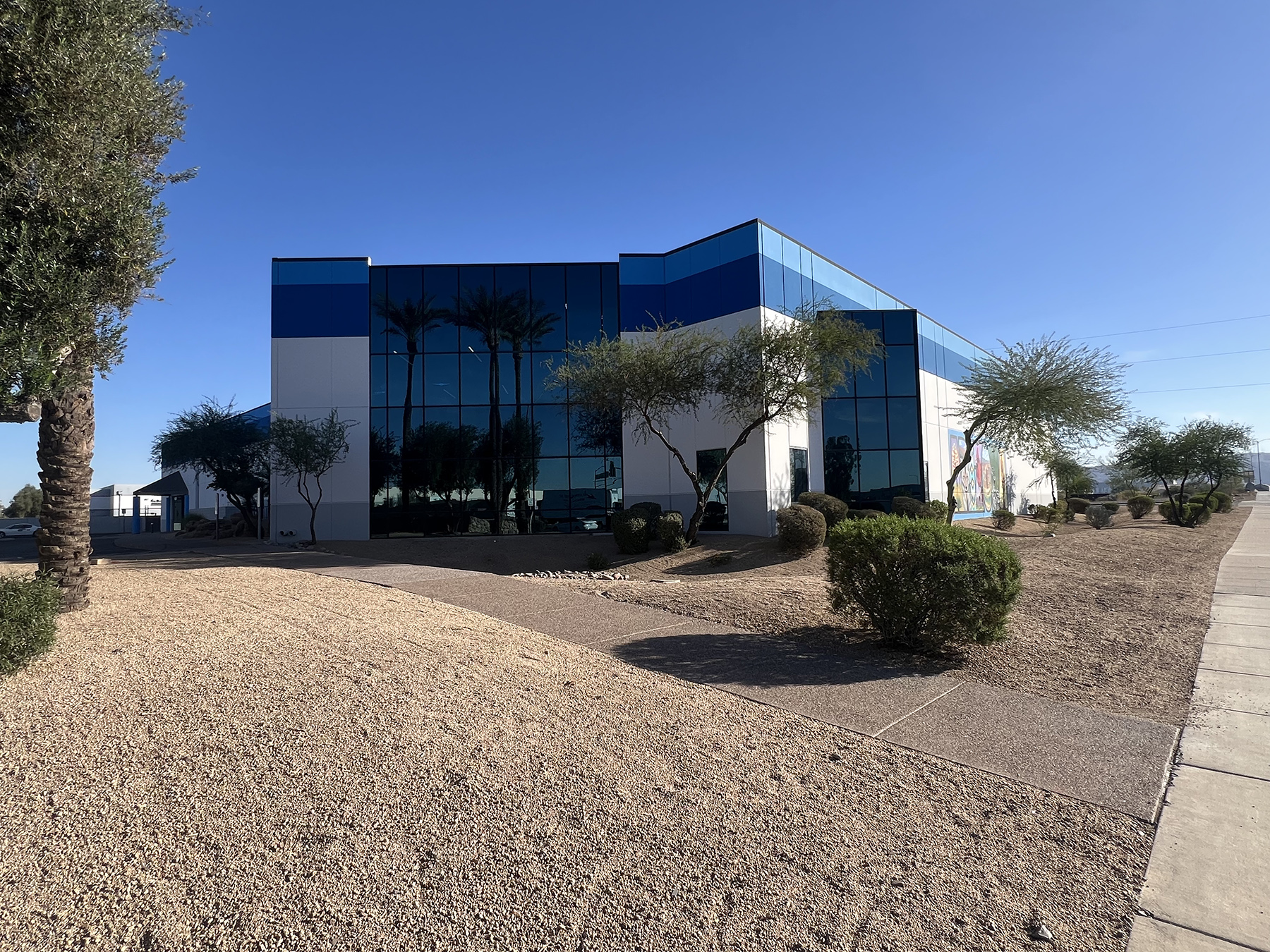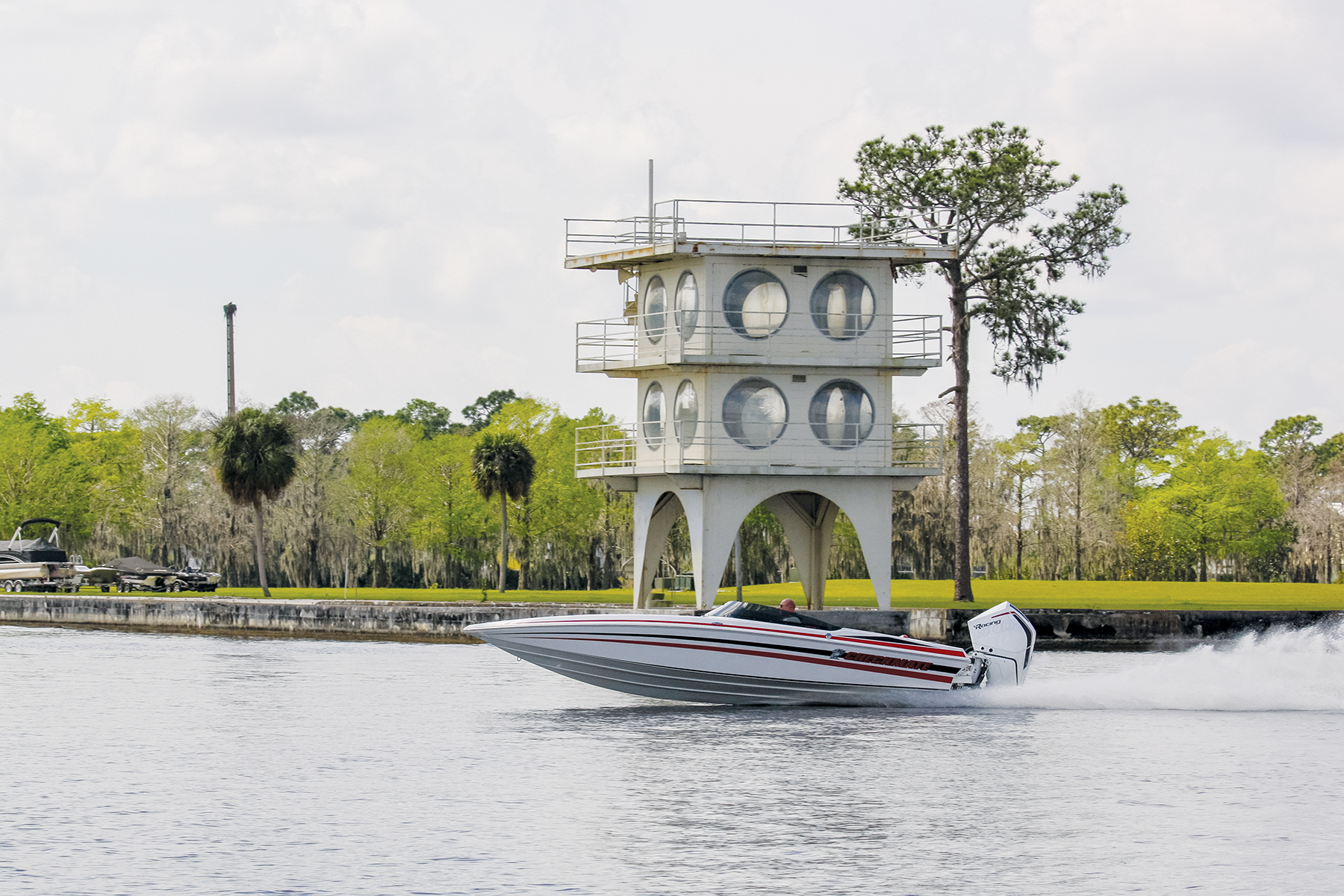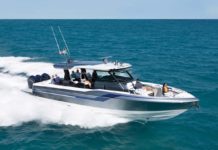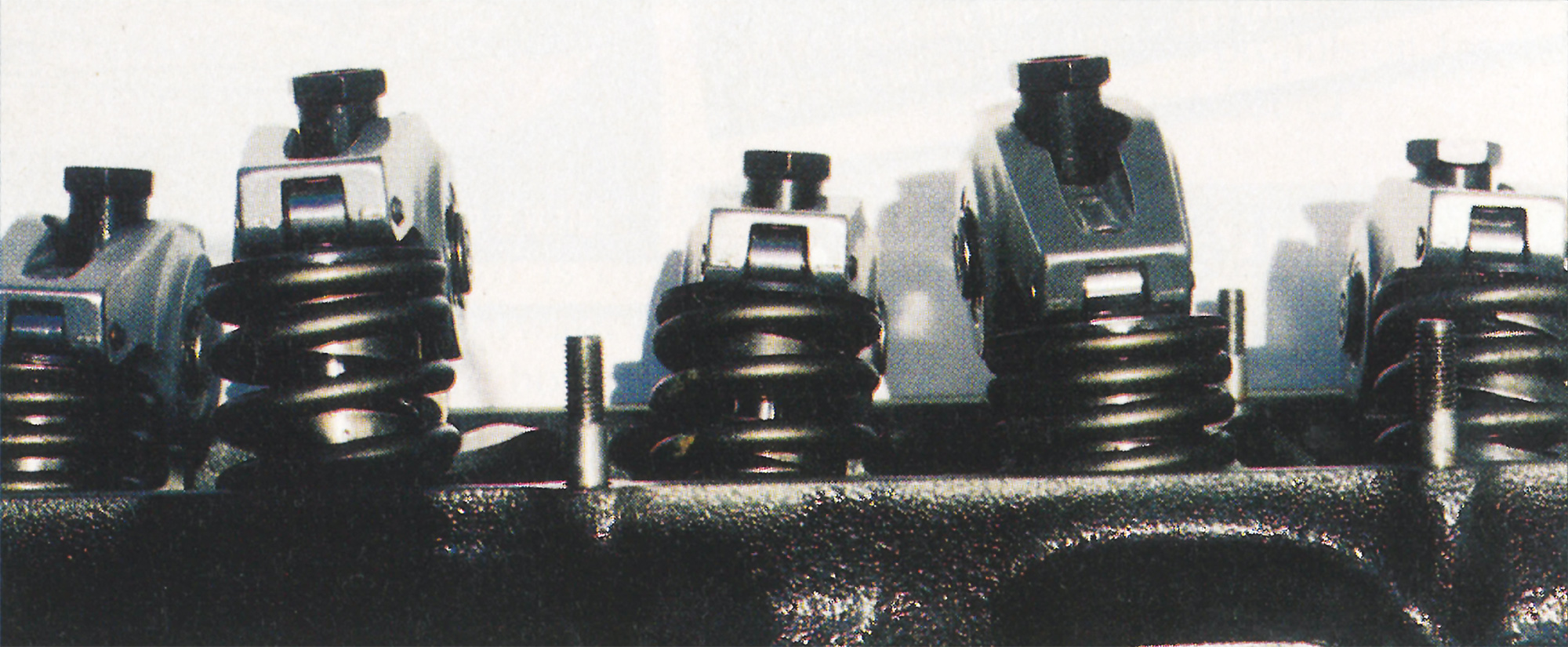
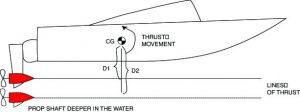 A key factor in boat performance set-up, X-dimension is a measure of the location of a boat’s propeller shaft relative to its bottom. For outdrives with anti-ventilation plates, X-dimension is generally defined as the distance of the anti-ventilation plate above the boat’s bottom. In this case, a greater X-dimension means the prop is shallower in the water. There are other definitions. In any case, X-dimension influences appendage drag, bow rise, trim angle range and propeller selection.
A key factor in boat performance set-up, X-dimension is a measure of the location of a boat’s propeller shaft relative to its bottom. For outdrives with anti-ventilation plates, X-dimension is generally defined as the distance of the anti-ventilation plate above the boat’s bottom. In this case, a greater X-dimension means the prop is shallower in the water. There are other definitions. In any case, X-dimension influences appendage drag, bow rise, trim angle range and propeller selection.
Optimizing X-dimension can result in a significant increase in top speed and improve boat handling. In this article, we investigate the physics of X-dimension changes and some of the factors that must be considered when making such changes. For the sake of these discussions, and without loss in generality, let’s assume that thrust acts along the prop shaft. Figure 1 shows how thrust is related to a boat’s center of gravity. Thrust has two basic effects on a boat.
First, it causes the boat’s center of gravity to move along the thrust direction. Second, if it is offset from the center of gravity, it causes the boat to rotate around its center of gravity. The rotation is due to a moment, or torque, equal to the thrust force times the perpendicular distance from the center of gravity to the thrust line.
Hydrodynamic forces oppose thrust. A boat accelerates until thrust and drag become equal, at which point it moves at constant speed. Similarly, the hydrodynamic forces create moments that can oppose or act with the thrust moment. The boat rotates, or changes attitude until these moments balance. It then continues to move at that attitude.
In reality, a boat rarely moves at constant speed and constant attitude due to changing seas and air currents. However, a stable boat will experience only small perturbations from its nominal speed and attitude.
To order a back issue call (800) 461-9128 or sign in to read entire article
From Figure 1 you can see that changing the depth of the prop shaft changes the distance between the center of gravity and the thrust line. If the prop shaft is deeper, this distance is greater, resulting in a greater thrust moment. The result is more bow rise, i.e. a greater angle of attack.
Angle of attack is a critical factor in boat performance. The correct angle of attack optimizes hydrodynamic lift to drag ratio. This means generating the most lift possible to reduce wetted area while keeping drag as low as possible to achieve the greatest top speed. Since controlling angle of attack is critical, you can see why X-dimension is an important parameter in performance set-up.
Unfortunately, changing X-dimension has other implications. It is not a simple matter to select the best drive height for a given boat. Reducing X-dimension reduces the amount of drive leg in the water. This reduces appendage drag, a positive result. At the same time, reducing this distance reduces bow lift. If a boat needs bow lift, this effect can negate the gains achieved by reducing drag. A small change in X-dimension, as little as 1/4-inch, can have a significant effect on performance.
X-dimension also affects trim angle range and trim effectiveness. Figure 2 shows a case where full trim inward causes a bow-down moment with a smaller distance between the prop shaft and the bottom while that same trim angle causes a bow-up moment with a larger distance. In addition, with the propeller operating nearer to the surface, the trim out range may be reduced to keep the propeller in the water. The closeness of the propeller to the surface impacts propeller selection. A surfacing type propeller may be required to product efficient thrust with the additional potential for aeration near the surface. Boat lean during turns may cause the propeller to get too close to the surface with twin engine/drive installations.
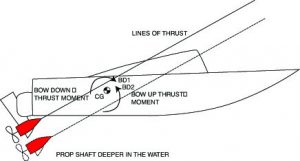 Propeller selection and X-dimension set-up go hand in hand. Propellers can be selected to provide greater bow or stern lift to compensate or add to the effects of X-dimension changes. Propeller rotation, inward or outward, can also be a factor in twin prop installations. While proper selection of X-dimension can reap substantial rewards, it is not a simple exercise. Getting the help of an expert can save many hours of experimentation and even more money. Be sure to tell the expert what type of boating you do, the typical load distribution in your boat, and your performance objectives. A small change in X-dimension may be the most effective approach to a faster, better handling boat.
Propeller selection and X-dimension set-up go hand in hand. Propellers can be selected to provide greater bow or stern lift to compensate or add to the effects of X-dimension changes. Propeller rotation, inward or outward, can also be a factor in twin prop installations. While proper selection of X-dimension can reap substantial rewards, it is not a simple exercise. Getting the help of an expert can save many hours of experimentation and even more money. Be sure to tell the expert what type of boating you do, the typical load distribution in your boat, and your performance objectives. A small change in X-dimension may be the most effective approach to a faster, better handling boat.


